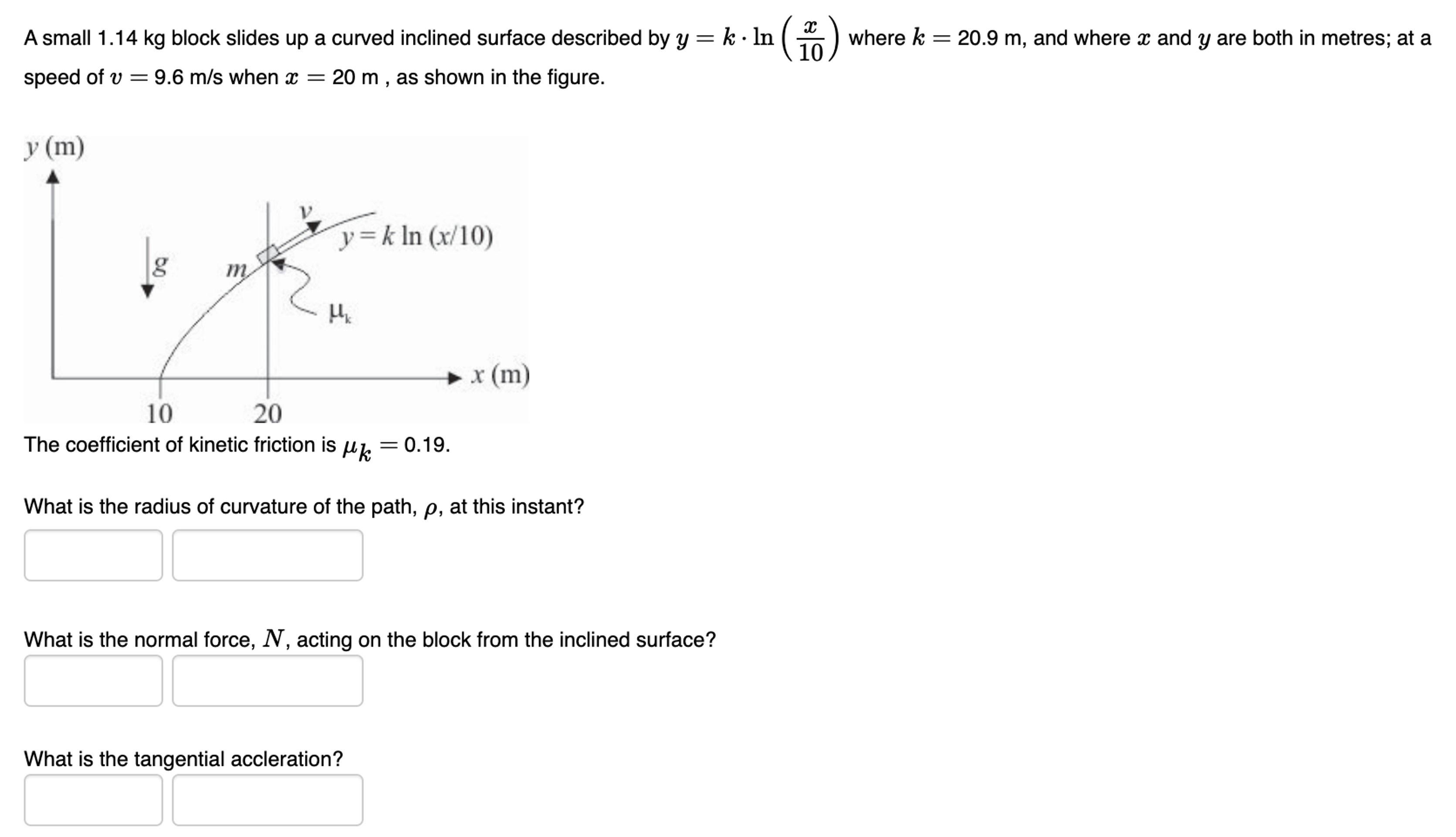A small 1.14 kg block slides up a curved inclined surface described by y = k⋅ln(x/10) where k = 20.9 m, and where x and y are both in metres; at a speed of v = 9.6 m/s when x = 20 m, as shown in the figure. The coefficient of kinetic friction is μk = 0.19. What is the radius of curvature of the path, ρ, at this instant? What is the normal force, N, acting on the block from the inclined surface? What is the tangential accleration?
